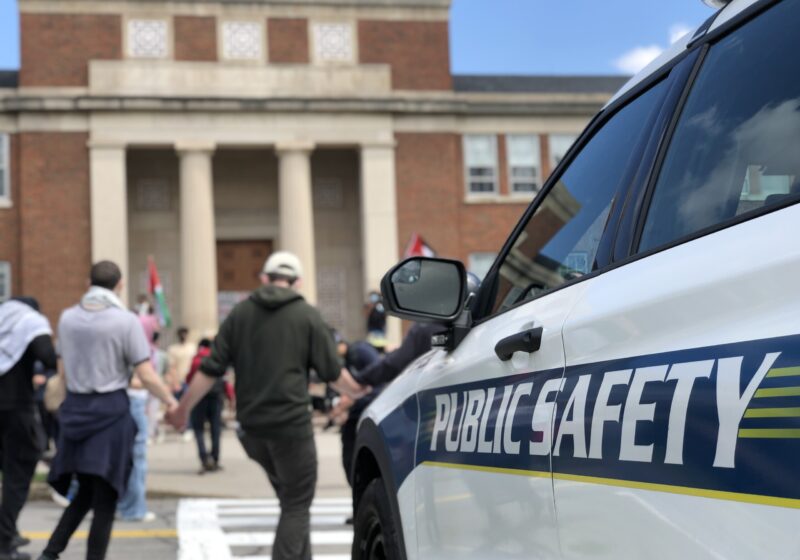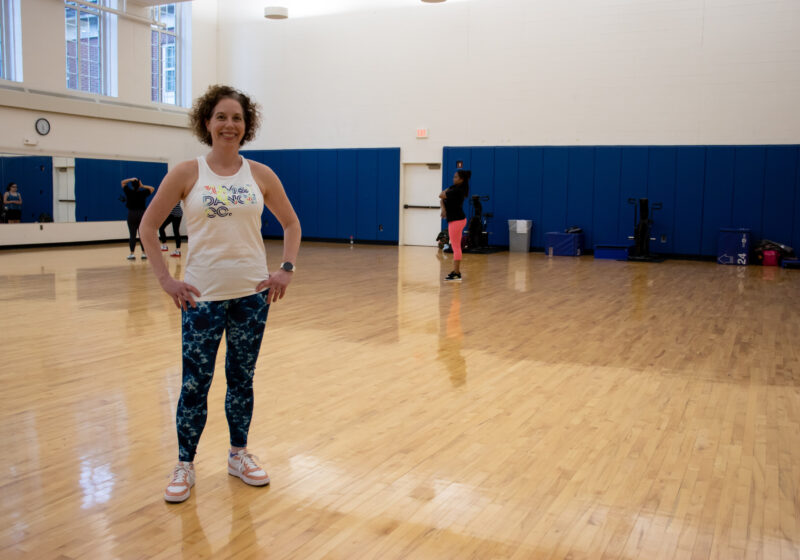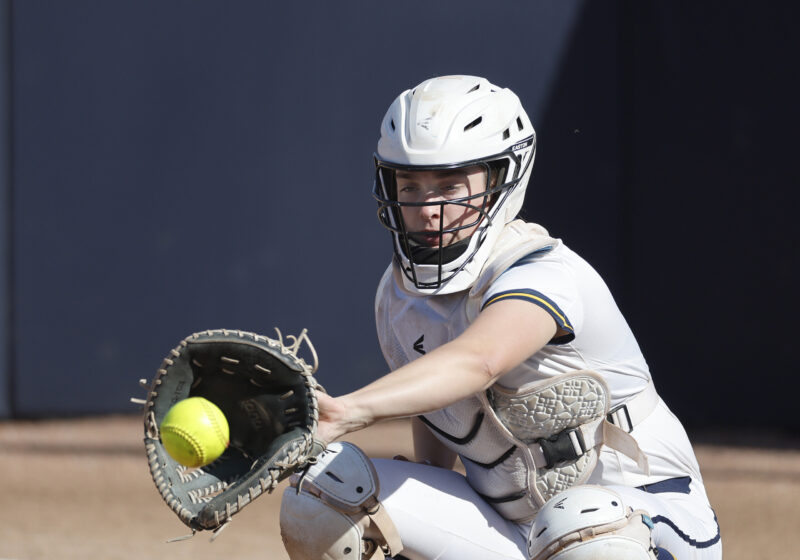It’s hard to fathom how much of an impact your college years will have on you. This past weekend, while performing with the Eastman Wind Ensemble at Carnegie Hall, I felt a touch of nostalgia.
Of course, when playing in an internationally known hall with an audience that worships wind ensemble music, it’s easy to feel special. But that wasn’t it. It was the people sitting all around me on stage and all the people sitting in the audience who helped us over the hurdles we climbed to get there.
Instead of my usual coping strategy of saying “it’s just another performance,” the moments I shared with my future colleagues on stage were a life-changing experience – we were the Eastman Wind Ensemble.
Carnegie Hall has quite a personality. It’s a stage that really talks to you – it tells you exactly how you sound and how everyone around you sounds, and it has such a glow to it that extends out to every inch of the hall, illuminating the audience. It wasn’t a golden glow, either – it was more sophisticated, outlined by the ivory-white decor on the walls. I heard more of the ensemble than I ever did in Eastman Theatre, for better and worse. The red-clothed seats in the audience, among the noble look of the theater, made it seem fit for royalty.
One block away from Carnegie Hall was the Park Central Hotel, one of those nice mid-town hotels that charges for location – two blocks away from Central Park with a view of Times Square down Seventh Avenue. Though slightly overcrowded, it provided the perfect location to make us feel like the high-rolling musicians we hope to be one day – and to fully stimulate the tourists in us all.
We joined the rest of the tourist nation to take a look at “The Gates,” an exhibit of serial art set throughout Central Park. Construction-orange gates guarded the walking paths in the park with a flowing orange material hanging from them, softening the look.
I’ve never seen Central Park so crowded – the exhibit was in its last weekend in New York City, en route to other locations across the country. Though controversial in its appeal, it gave the picture we took a place in a historical context that we’ll remember each time we look back on it.
The support of the Eastman School of Music faculty, students, family and alumni at the concert was inspiring. Parents flew in from places like Minnesota and Michigan just to hear their loved ones play in the prestiged Carnegie Hall. Dean and Director of Eastman James Undercofler, composer of the trombone concerto we played, Jeff Tyzik, and former faculty member and composer of our show-stopper, Karel Husa, were all audience members. Alumni new and old – including the famed Maria Schneider – former conductor of the ensemble Donald Hunsberger, current Eastman students and staff from Alumni Relations, the ensemble office and career services were also there, to name just a few. Every single one of them was responsible for our presence there and was a part of the performance as much as we were with our instruments.
With the passing of our dear founder, Frederick Fennel, we opened our concert with an arrangement of a Bach chorale called “Come, Sweet Death,” without a conductor. As we started, the audience hushed, and tears filled all of our eyes – the ghost of Fennel stood on that podium, conducting us and leading the way as he had his whole life. I can still see his miniature silhouette with a huge approving smile that is larger than he is and his arms in the air in the grand manner that he always conducted.
Only “Fandangos,” by Robert Sierra, arranged by our conductor Mark Scatterday, could have cheered us up after such a touching dedication. Scatterday found his way to the podium and we were off on a wild ride of Spanish guitar-inspired music. This was the first time the piece was heard by an audience full of college band directors who will now be able to bring this wind arrangement out into the world of wind ensemble repertoire.
“Tears,” a piece by David Maslanka, has been the ensemble’s most uneasy piece. Whether it’s the unpredictable placement of rhythmic motives, or the nightmarish sections with harsh chords, or even the lack of conventional structure that always trips us up, it’s both the piece we’ve played the longest and the piece we’ve needed the most work on.
Despite this, each member of the ensemble did their job with confidence and detail for our concert. Sometimes the best compositions leave it to the musicians to give a piece understanding, and Maslanka’s composition did that for us.
Tyzik will surely become a well-known name in the world of composition, on top of his already well-known position as a pops conductor. His trombone concerto was compositionally interesting and outgoing, as he always was when working with the ensemble to smooth out details.
Mark Kellogg, principal trombone of the Rochester Philharmonic Orchestra, professor of trombone at Eastman and soloist with the ensemble this weekend, was initially unknown to many of us outside of the trombone studio, but soon became our friend.
Every note had his utmost dedication and a kind touch. His ability to give the trombone an introspective character, instead of its usual loud brassy nature, gave us the message that music is the ultimate goal of a musician.
Tyzik’s concerto was written as a response to September 11. At the ending of the slow movement of his concert in Carnegie Hall, as Kellogg released his final note with grace, sirens could be heard from the outside streets of New York. Perhaps that touched our hearts more than anything else could have that night.
A close second was when we finished Husa’s piece, “Music for Prague.” This piece is possibly the most significant, and one of the most difficult, pieces written for wind ensemble. After every rehearsal we had on this piece, I was emotionally drained.
Daria Binkowski, playing the piccolo solo representing a dove, put her heart into it on Saturday night. The percussion section played the third movement with an air of relaxation and confidence, sending chills down our backs and ending with a snare roll that stormed through the hall, reaching the audience at their core.
The final movement was a recreation of the frightening attack on Prague, so skillfully composed by Husa. Carnegie Hall proved to be magnificent by making each note clear to both the audience and the ensemble, helping us keep the interlocking motives together.
At the finish of the piece, the audience rose to their feet and turned to acknowledge Husa, sitting on the second tier of the hall. The audience was both ecstatic and appreciative of our hard work. We had proved, once again, that the Eastman Wind Ensemble is one of a kind.
After greeting the gathering of band directors, students from other ensembles, the horde of Eastman faculty, almuni and our families, we went out to celebrate. New York City was at our disposal, and we were ready to take advantage of all of its nightlife.
A special celebratory brunch was set up for the Eastman Wind Ensemble and Eastman alumni by the alumni office at a high-class restaurant named Shelly’s.
It was at the brunch that Scatterday spoke of being proud of the level we achieved that weekend.
“Last Friday night, you were fantastic, but last night in Carnegie, it was spectacular,” Scatterday said.
We were also graced by the presence of the beautiful and famous alumna of Eastman, Maria Schneider. Schneider is a well-known jazz composer and conductor, who won a Grammy for her latest recording only weeks prior.
Schneider gave a speech that seemed to fly out of her heart about her experiences. She told us how we should never underestimate our art and never let anyone, including recording companies and other contract jobs, sell us short.
Her latest recording not only won a Grammy, but was the first recording to only be sold on the Internet to receive a Grammy.
She told us to never believe anyone who says this is a bad time to be a musician, but to know that this is j
ust a time to be innovative.
Schneider’s Web site is part of her appeal. Her Web site lets fans interact with the artistic process of composition. She updates it frequently with journal entries about writing music, and fans can sign up to see her scores in all stages of completion.
Scatterday constantly told the ensemble that this experience would change our lives and said that a degree from Eastman will follow us around for the rest of our lives. Seeing the alumni response at the brunch just reiterated this for us.
Going from class to class, rehearsal to rehearsal, it’s difficult to gage the impact that Eastman will have on your life when you leave.
Being a part of the Eastman Wind Ensemble in New York City this weekend gave me a taste of what it means to come from Eastman.
Reguero can be reached at areguero@campustimes.org.


